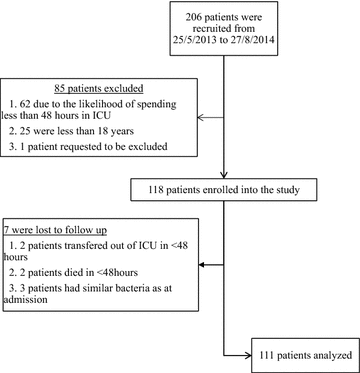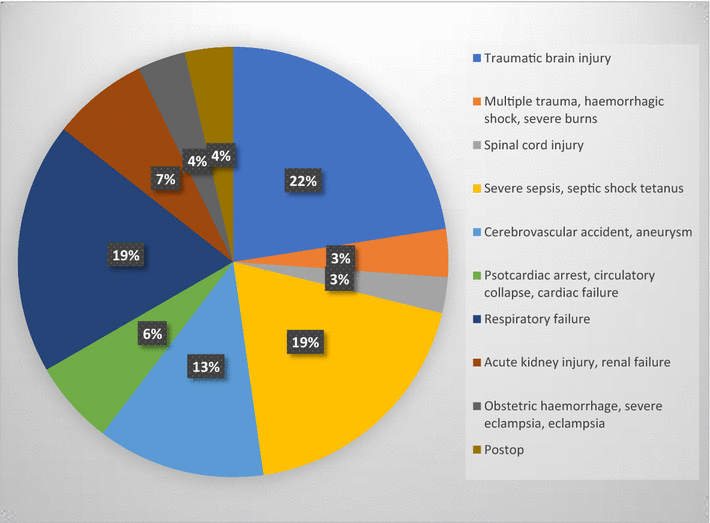Nosocomial bacterial infections and their antimicrobial susceptibility patterns among patients in Ugandan intensive care units: a cross sectional study
- PMID: 28754148
- PMCID: PMC5534037
- DOI: 10.1186/s13104-017-2695-5
Nosocomial bacterial infections and their antimicrobial susceptibility patterns among patients in Ugandan intensive care units: a cross sectional study
Abstract
Background: The intensive care unit (ICU) admits critically ill patients requiring advanced airway, respiratory, cardiac and renal support. Despite the highly-specialized interventions, the mortality and morbidity is still high due to a number of reasons including nosocomial infections, which are the most likely complications in hospitalized patients with the rates being highest among ICU patients.
Methods: In this cross-sectional study of 111 adult patients admitted to 2 of the ICUs in Uganda, we set out to describe the commonest bacterial infections, their antimicrobial susceptibility patterns and factors associated with development of a nosocomial infection.
Results: Klebsiella pneumoniae (30%), Acinetobacter species (22%) and Staphylococcus aureus (14%) were the most frequently isolated bacteria. The prevalence of multidrug resistant bacterial species was 58%; 50% Escherichia coli and 33.3% Klebsiella pneumoniae were extended spectrum beta lactamase or AmpC beta lactamase producers and 9.1% Acinetobacter species were extensive drug resistant. Imipenem was the antibiotic with the highest susceptibility rates across most bacterial species. Institution of ventilator support (P 0.003) and severe traumatic brain injury (P 0.035) were highly associated with the development of nosocomial infections.
Conclusion: Due to the high prevalence of multi drug resistant (MDR) and extensive drug resistant bacterial species, there is a need for development of strong policies on antibiotic stewardship, antimicrobial surveillance and infection control to help guide empirical antibiotic therapy and prevent the spread of MDR bacteria and antibiotic drug resistance.
Keywords: Drug resistance; Intensive care unit; Mechanical ventilation; Nosocomial infections; Traumatic brain injury.
Figures



References
MeSH terms
Substances
LinkOut - more resources
Full Text Sources
Other Literature Sources
Medical

